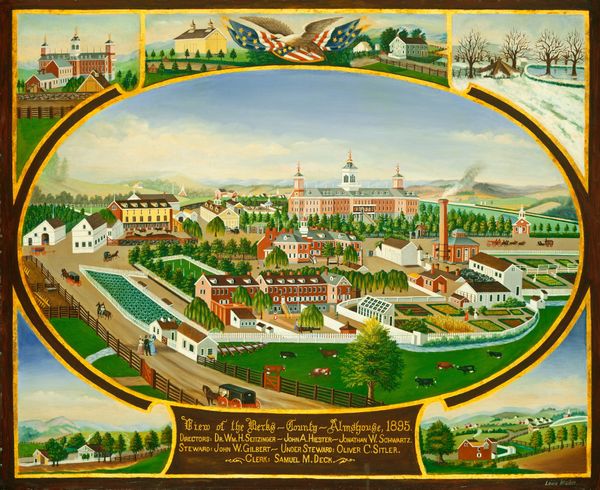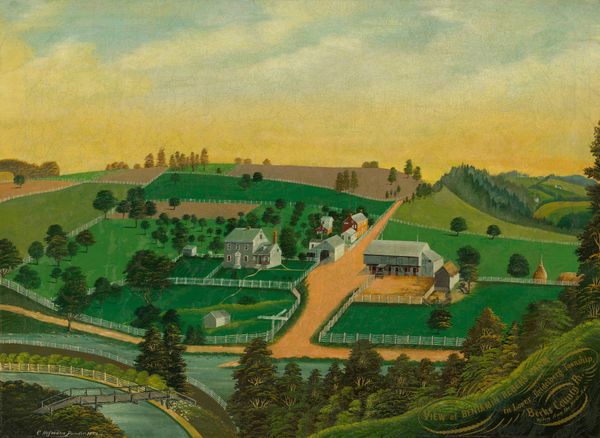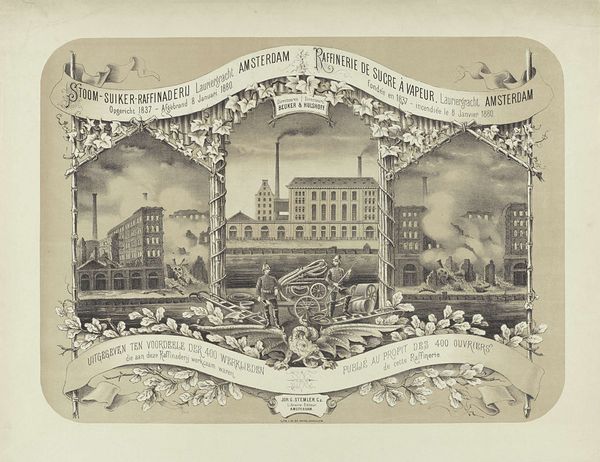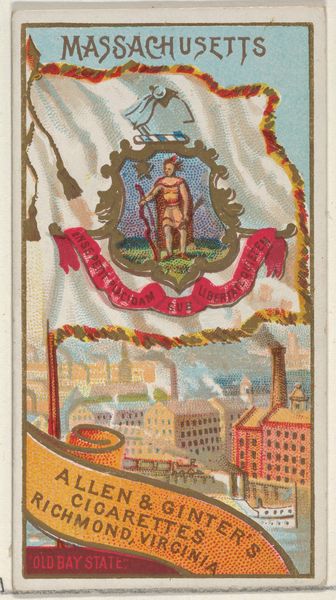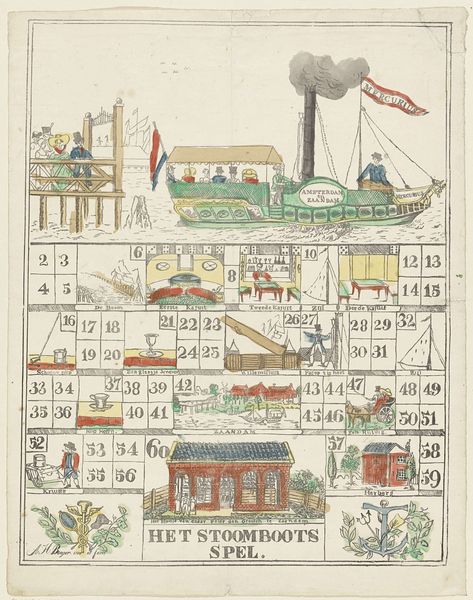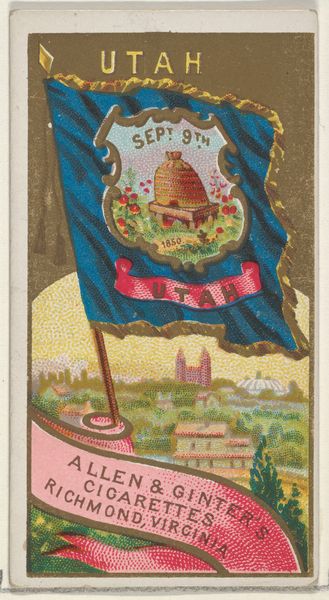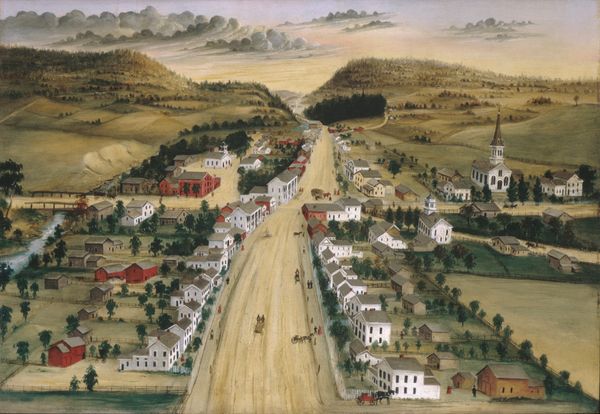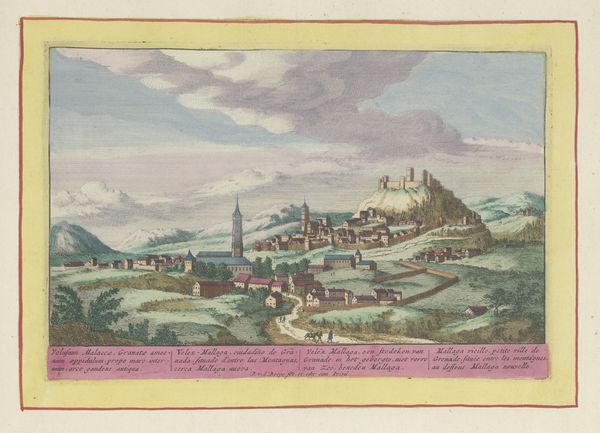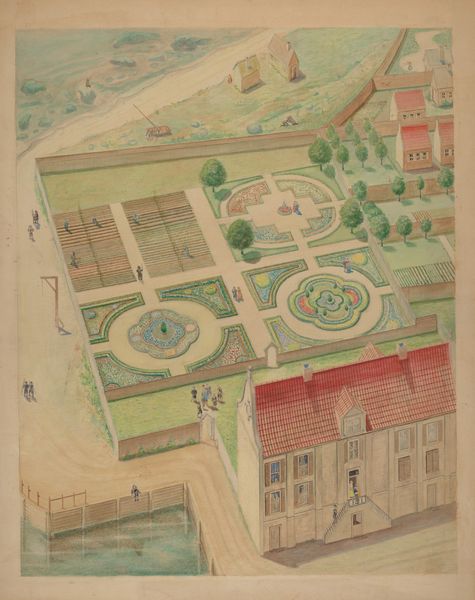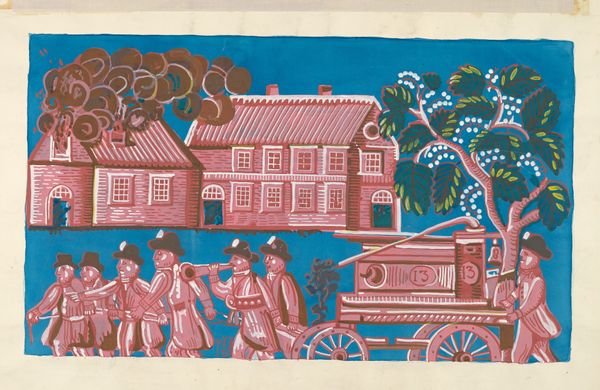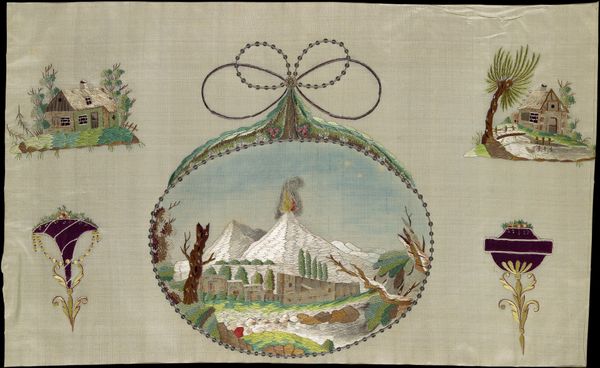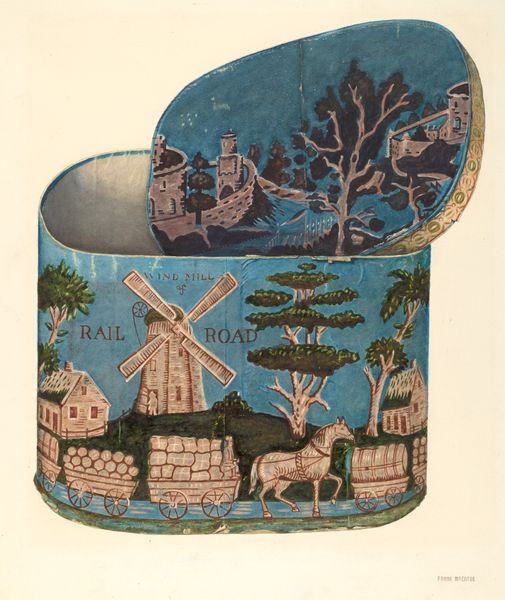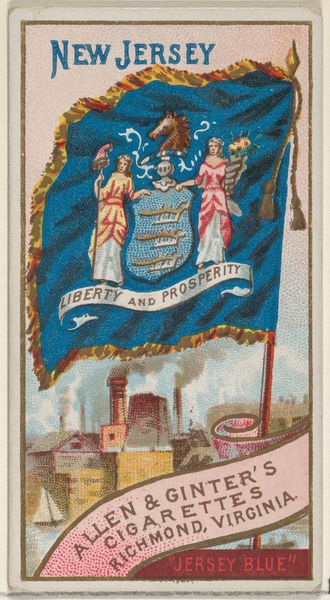
painting, oil-paint
#
painting
#
oil-paint
#
landscape
#
oil painting
#
naive art
#
cityscape
#
genre-painting
#
regionalism
#
watercolor
Dimensions: overall: 82.5 x 99.6 cm (32 1/2 x 39 3/16 in.) framed: 97 x 114 x 5.7 cm (38 3/16 x 44 7/8 x 2 1/4 in.)
Copyright: National Gallery of Art: CC0 1.0
Curator: This piece, painted in 1878 by Charles C. Hofmann, depicts the Berks County Almshouse. The medium appears to be oil paint on canvas, although with the visual precision, it might almost be mistaken for watercolor. Editor: My first thought is how strangely compelling this is. It's both bucolic and unsettling. There’s something almost obsessive about the detail and that ornamental border. Curator: Indeed. Hofmann’s attention to detail is remarkable, showing us not just the almshouse itself, but the entire surrounding landscape with incredible specificity. This focus directs our attention to the scale and material construction of the almshouse within its historical setting. Look at the outbuildings, the road… the evidence of work everywhere. Editor: Absolutely. And it begs the question: what exactly was Hofmann trying to say by showing us all of this? The image becomes a visual document, both reflecting and shaping the viewer's understanding of that institution in its time. The building looms like a well-to-do school of some kind, the entire frame is a PR message aimed at what audience? Curator: Exactly. The image functions on several levels. We might consider the source and application of the materials. Hofmann, working in a regionalist style, seems keen to document the institution in a way that suggests civic pride—an up-to-date building amidst productive farms, made from locally sourced materials. A show of Pennsylvania's progress and, perhaps, its benevolence. The building materials themselves speak to the region's industrial capabilities at that moment. Editor: It’s a curated version of reality, definitely. And given the context of almshouses and their often harsh conditions, this picturesque portrayal has clear propagandistic undertones. Consider also how the image, circulated as a painting or print, contributed to public perceptions and shaped social narratives around poverty and social welfare in Berks County and beyond. Curator: And that elaborate border, the multiple viewpoints integrated within the composition—these design choices speak to a desire to frame the institution not as a place of last resort, but as an integral, well-managed part of the county's fabric. Editor: The layering of images almost anticipates contemporary media tactics; so its own reception would be tied to this crafted context, I imagine. Thanks to this dialogue, my understanding of the institution has significantly developed. Curator: And I am interested in how Hofmann translated social responsibility into his labor and material choices to document the place. Food for thought, certainly.
Comments
No comments
Be the first to comment and join the conversation on the ultimate creative platform.
